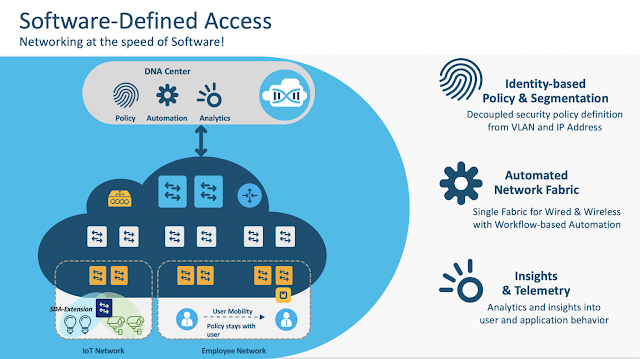I hold daily status meetings with various groups within our technology team, and the questions almost always drifts to: “What’s today’s challenge?” Sometimes that challenge might be, “We can’t print at one of our ambulatory care facilities,” or “Today, we can’t send diagnostic images to our remote Radiologists.” The meeting helps us to focus our attention, and as the
CTO of OU Health in Oklahoma City, my job is to eliminate the issues that crop up on those meetings and work to minimize or eliminate these issues repeating in the future.
To do so, we needed to tackle the root of the problem. This, along with our desire to replace our electronic health record and revenue cycle system, contributed to OU Health’s decision to completely overhaul our IT infrastructure in support of our long-term organizational needs.
OU Health strives to bring innovation to our patients. As an academic health system, we operate one of 71 National Cancer Institute-designated cancer centers in the country, Oklahoma’s only Level I trauma center and the state’s highest level NICU, offering high-quality patient care and running clinical trials leading to exciting new treatments. More than solving our daily headaches, our IT overhaul will fundamentally transform how we manage our infrastructure and administer the enterprise and clinical systems we use to support our healthcare professionals and patients.
A complete revamp of a health system’s IT infrastructure is a daunting task. To use a well-worn cliché, it is like trying to work on the engine of a moving train. The process has taken dedication and careful planning, the work of my team and the support of technology partners like Cisco to put together and roll out a solution across OU Health’s sites.
A Fresh Start, a Greenfield Network, and Some Limitations
I have had the privilege of working in healthcare IT for over 13 years. My previous experience includes serving as the VP of Technology Architecture at Cablevision for seven years and two years at Discovery as the SVP of Enterprise Architecture, where I gained a wealth of knowledge in telecommunications and entertainment. Following a six-month sabbatical, I had the opportunity to return to my previous role, but I decided to use my expertise to assist others in a much more impactful way. Watching my wife struggling for years with her organization’s IT as a family practice provider and educator made me realize the difficulties that arise when dealing with healthcare IT systems. Thanks to a friend I had worked with earlier in my career, I joined a healthcare consulting company launching my career in healthcare IT to help physicians and patients achieve the best possible outcomes in medical care.
OU Health officially launched in July 2021, following a historic merger that combined the University of Oklahoma College of Medicine faculty practice and OU Medicine, Inc. (sole member, University Hospitals Trust) to create OU Health — Oklahoma’s first fully integrated academic health system. The merger aligned the OU Health clinical enterprise with national best practices across the healthcare industry and enabled the hospitals and clinics to become one unified and cohesive organization.
Since my arrival at OU Health in March of 2022, I have worked closely with our IT leadership team on the Epic migration project. This initiative moved OU Health to a new EHR system. To achieve this, we deployed a greenfield solution, which involved setting up new networks, systems, data centers and applications, while keeping our legacy systems running.
Unfortunately, our environment was not in the best shape. It featured outdated equipment, overlapping solutions, outdated code, unpatched equipment, and more, which caused numerous challenges. Our network was also very slow, which meant that it took 15 to 30 minutes for a radiologist to download X-rays and CAT scans at our remote locations.
This hindered workflows and caused frustration among our clinicians and hospital staff. They had to call us whenever something went wrong, and we had no way to proactively monitor and restore our systems. When a link went down, we didn’t know how to repair it. It was clear that an overhaul was necessary to ensure that our healthcare professionals could focus on caring for their patients and not worry about technical issues.
We Wanted Redundancy, Resilience, and Performance—That Meant Cisco
Healthcare organizations are somewhat conservative when procuring IT. We don’t look for the newest solution, nor do we look at the cheapest. We don’t cut costs because patients’ lives are at stake. Instead, we look at the most advanced tried and true systems. We take this approach when selecting lab equipment, imaging and diagnostic systems, surgical supplies, and more.
At OU Health, we have a long-standing relationship with Cisco, and our lead engineer holds
CCIE Enterprise Infrastructure certification. Our internal project manager also brings decades of experience in managing large-scale Cisco deployments. We all know that Cisco can deliver highly performant, redundant and resilient infrastructure. However, my job requires me to be objective, so I attend events like Gartner Summits and the annual HIMSS Global Health Conference & Exhibition to see what’s out there. I have an excellent grasp of the technology landscape, and I’ve yet to find a partner that can deliver on its promises like Cisco.
Hospitals are 24/7 institutions, and hospital infrastructure must fully support a never-down scenario.
When we created the specifications for our new environment, we looked at three things: high redundancy, high resilience, and high performance. OU Health, like most healthcare organizations, runs 24 hours a day, seven days a week, and our infrastructure must fully support a never-down scenario. When it came time to build our new environment, we didn’t ask, “Why Cisco?” The real question was, “Why not Cisco?”

Redefining Our Network with Software-Defined Networking
When it came time to pitch our new infrastructure, the team worked with Cisco’s network architects, external partners, and our internal lead architects. We put together a funding request and presented it to our board. We expected our executives to approve less than what our budgeted request was, but instead we were given the green light to build everything we had asked for – a state-of-the-art network and system environment that would put OU Health on the map as a top-tier medical center.
We built our new network on Cisco technology. Its core layer is
Cisco ACI (Application Centric Infrastructure), a software-defined networking solution, to help segment our network. We built redundant high-speed links throughout our Wide Area Network (WAN) and multiple paths connecting our core network to our hospitals, clinics, and ambulatory systems. Then we have multiple routers to handle our software-defined network and segmentation. If a router or segment fails, we divert traffic to an alternative path.
We use Cisco ACI to route traffic to specific destinations within our network. A great example is lab results. Our lab equipment doesn’t communicate with the outside world, but our technicians must send results to our EMR. So, we’ve segmented the network to transfer results only to specific servers that then upload them to our records systems.
Patient health includes their healthcare data, and we prioritize the security around our patients’ protected health information (PHI). We used ACI to create a firewalled zone for PHI and other sensitive data per HIPAA regulations. Users can only access that environment if they’re performing a transaction requiring that information.
We also use Cisco UCS servers for scalable efficiency and agility, Cisco Identity Services Engine (ISE) for endpoint management, and we go end-to-end on Cisco wireless solutions, consisting of Cisco Catalyst 9130AX and 9166 access points and 9800-80 controllers. In addition, we adopted Cisco VDI to integrate some of our legacy systems (running on ancient machines) into our new infrastructure. Virtualizing these allows us to keep them running until we’re able to replace the systems without disrupting care.
Migrating Our Data Centers to Ensure IT Transparency
Our three new data centers carry the load of our new network. Two of our data centers are active/active and mirror each other, splitting our workloads in two and with each facility running at 50% capacity. Our third data center is for disaster recovery (DR) and has redundant links to all our hospitals, clinics, and ambulatory systems. Should the unthinkable happen and our primary data centers fail, the third data center will ensure we remain operational.
One of our biggest challenges and opportunities was migrating our systems and infrastructure to new, more sustainable data centers. Instead of building our own on-prem data centers, we decided to partner with a top-tier co-location facility who could host our data centers and lower our footprint dramatically. We partnered with TierPoint, and were one of the first clients at their new facility built with efficiency in mind. They architected the power, cooling, HVAC, and building materials to reduce their carbon footprint. We benefit from robust redundancy and backup features, and the energy-efficient technology helps lower our operating expenses while protecting the environment. Moving our data center off-prem was one of our best business and tech decisions.
On June 3, 2023, OU Health went live with Epic and our new infrastructure. We had already moved to our new primary network in March 2023, but this was the final test. We are already reaping the rewards of our new Cisco infrastructure. We’re no longer fielding complaints about slow Wi-Fi speeds, connection failures, network segment outages and VPN issues. OU Health can access what they need quickly, getting patients what they need faster. I look forward to sitting down with our care teams to find ways to expand, innovate and build on our new platform.
Cisco Is Helping OU Health Elevate Our Organization
Before long, my IT team will be able to leverage our new Cisco network to enable and execute OU Health’s business vision. We can integrate new departments, locations, and facilities into our network faster because we anticipated the need to build more WAN connections and have a comprehensive map of both current and future state. In the past, every network addition was a one-off event. But now, we can expand our platform as needed to add powerful new applications like data analytics and population health management (PHM) tools to aggregate patient information across multiple systems and technologies. Now that we have rolled out Epic, we have a solid foundation to help us push the envelope of quality patient care and cutting-edge research.
The best minds gravitate to organizations that let them add value by supporting a business vision instead of fixing things.
Our new Cisco infrastructure is a valuable retention and recruitment tool. Clinicians and researchers also want to work in high-tech environments. They would prefer user-friendly systems over struggling with electronic forms, drowning in endless emails, or waiting hours for medical images, test results, and trial and patient data. When they have the most efficient tools and IT works flawlessly, they can focus on their patients and research.
OU Health is on a mission to elevate and transform our organization into a top-tier academic health system. Our leadership sees technology as key to delivering on our vision and business strategy. We are expanding our services and research initiatives and will continue to innovate in diabetes and cancer care, pediatrics, and geriatrics. We want to make a difference in Oklahoma and beyond by bringing the best medical care to the populations we serve.
Source: cisco.com






















